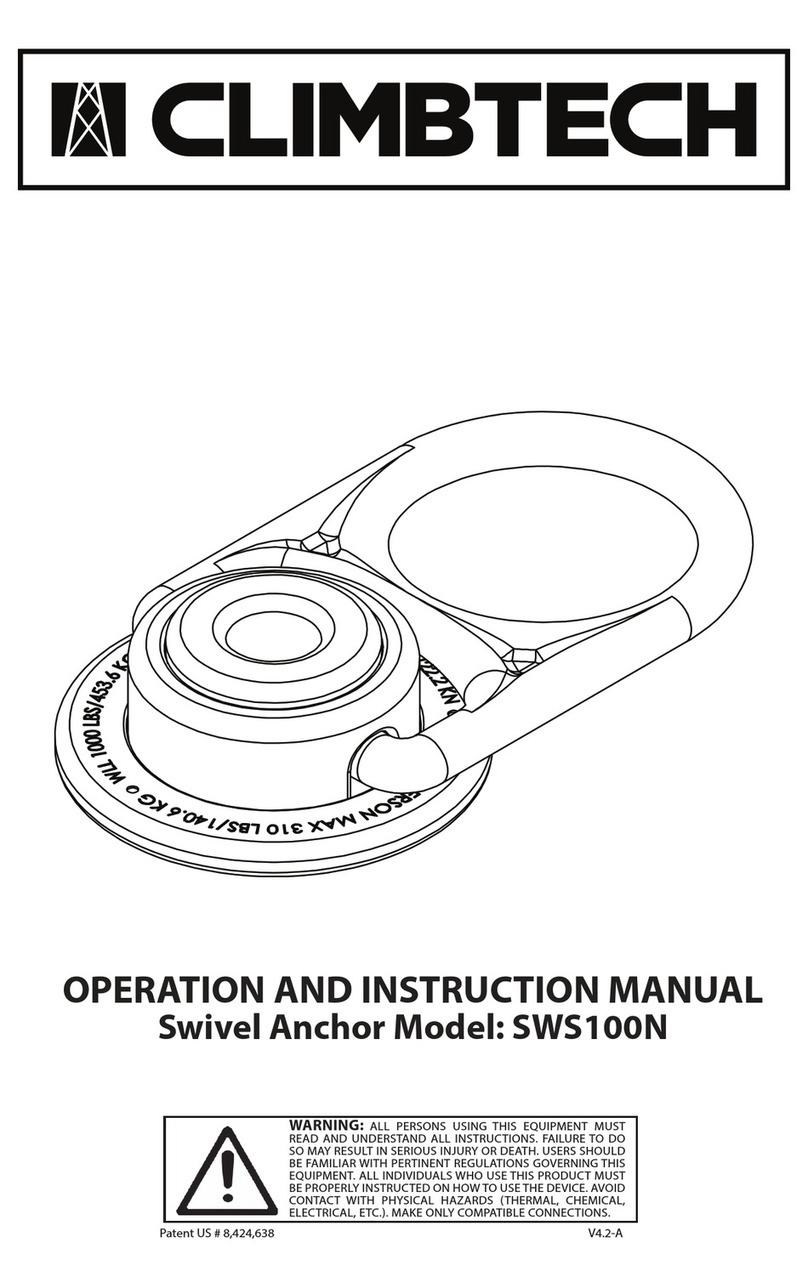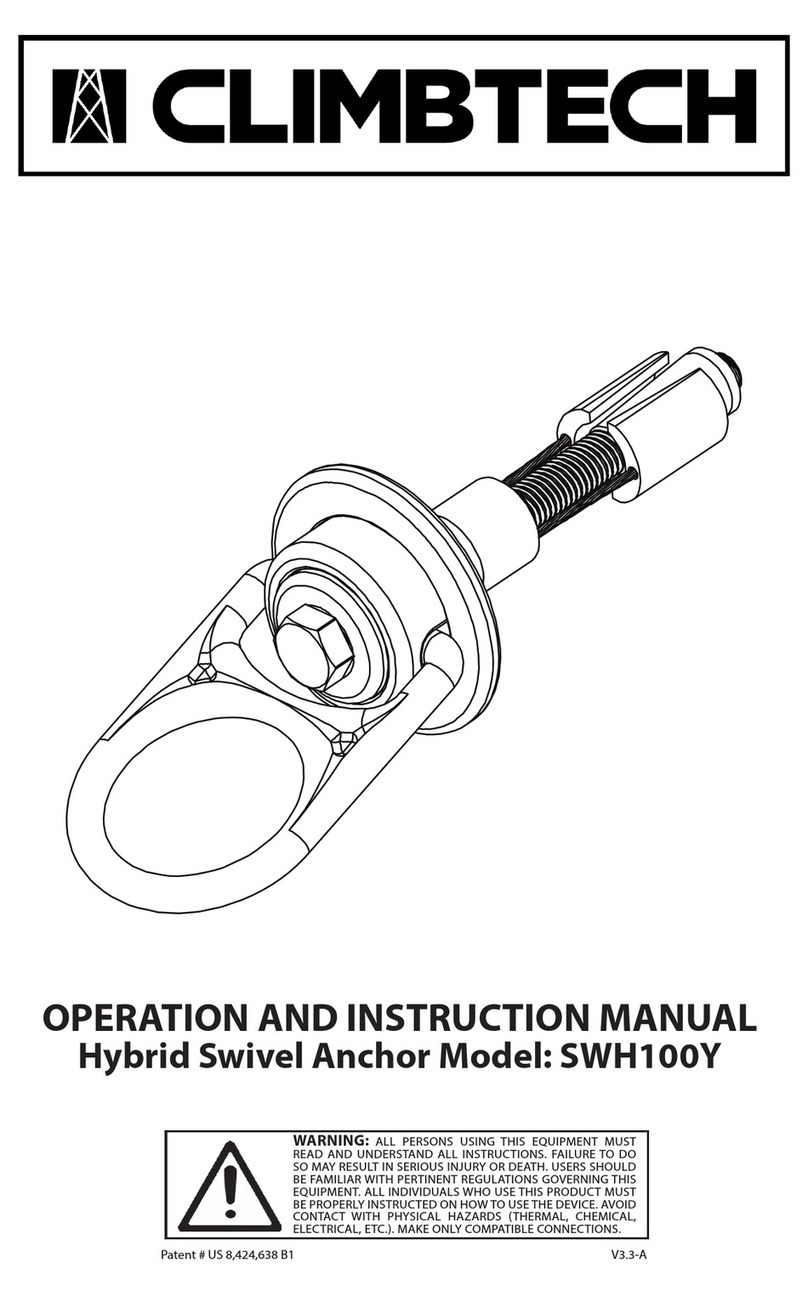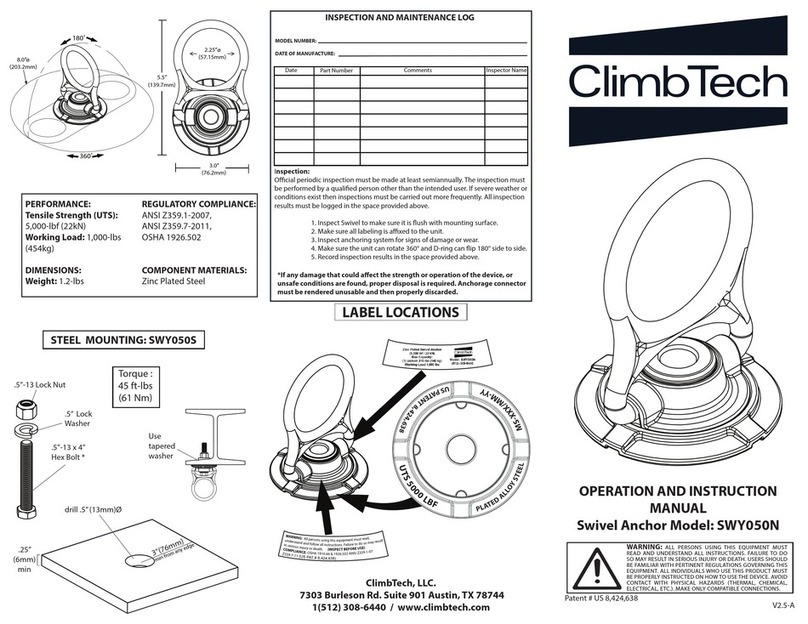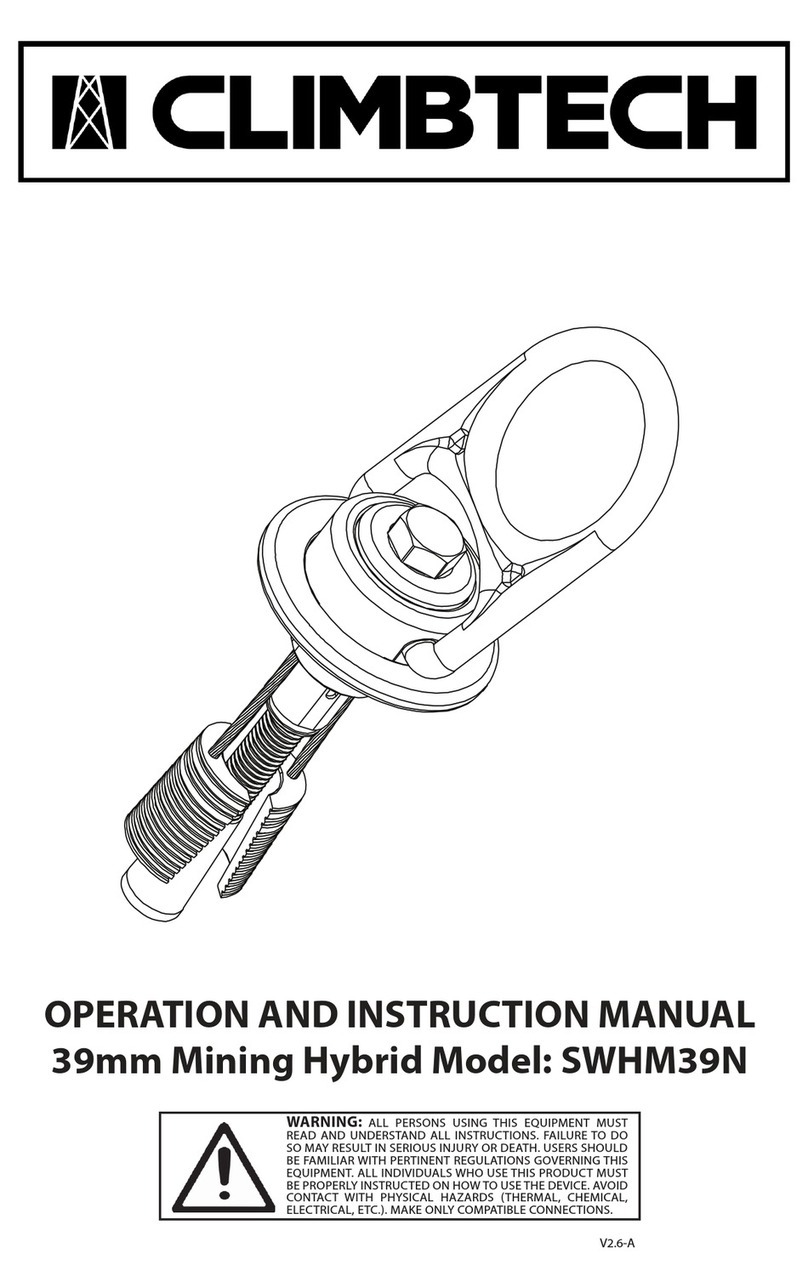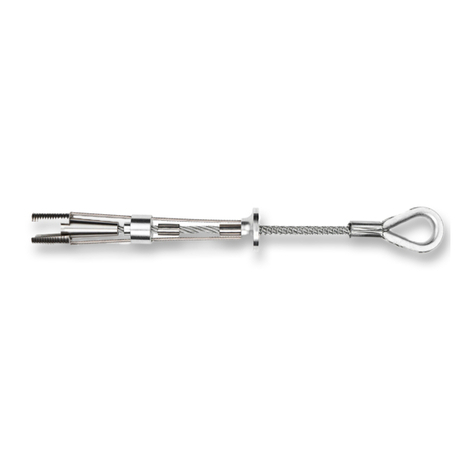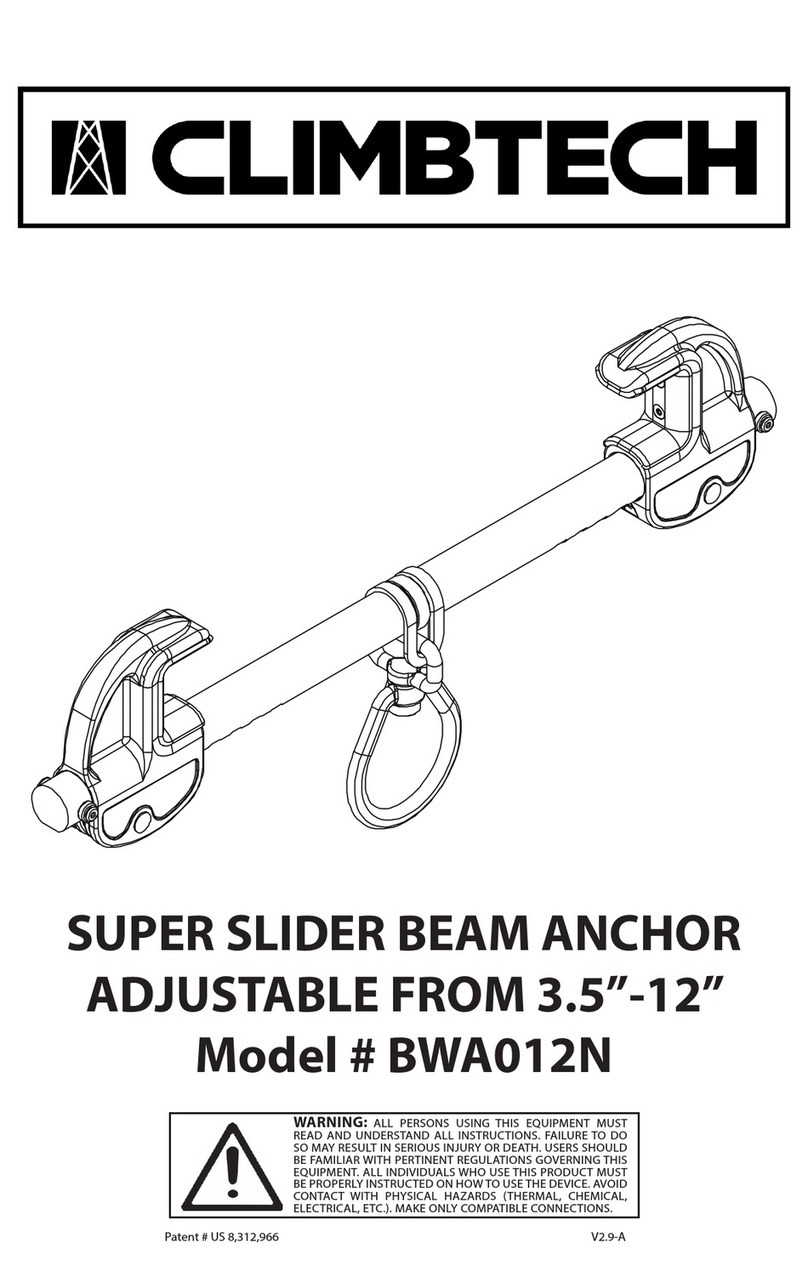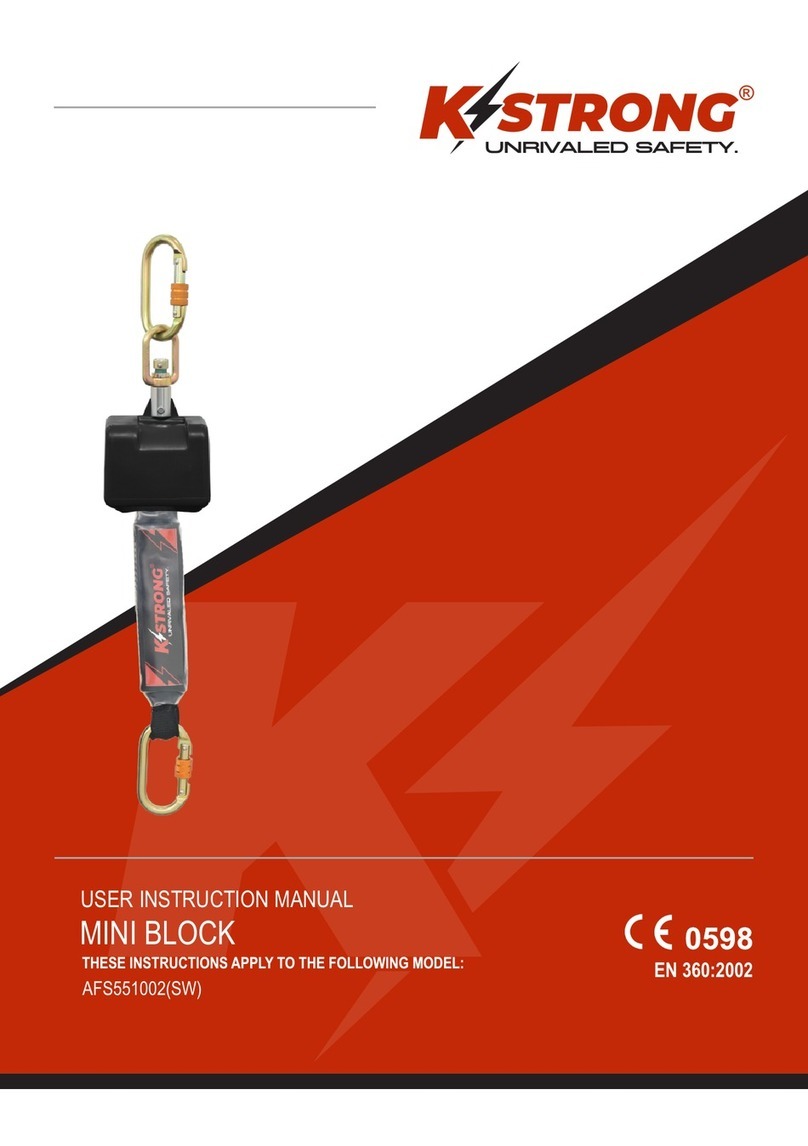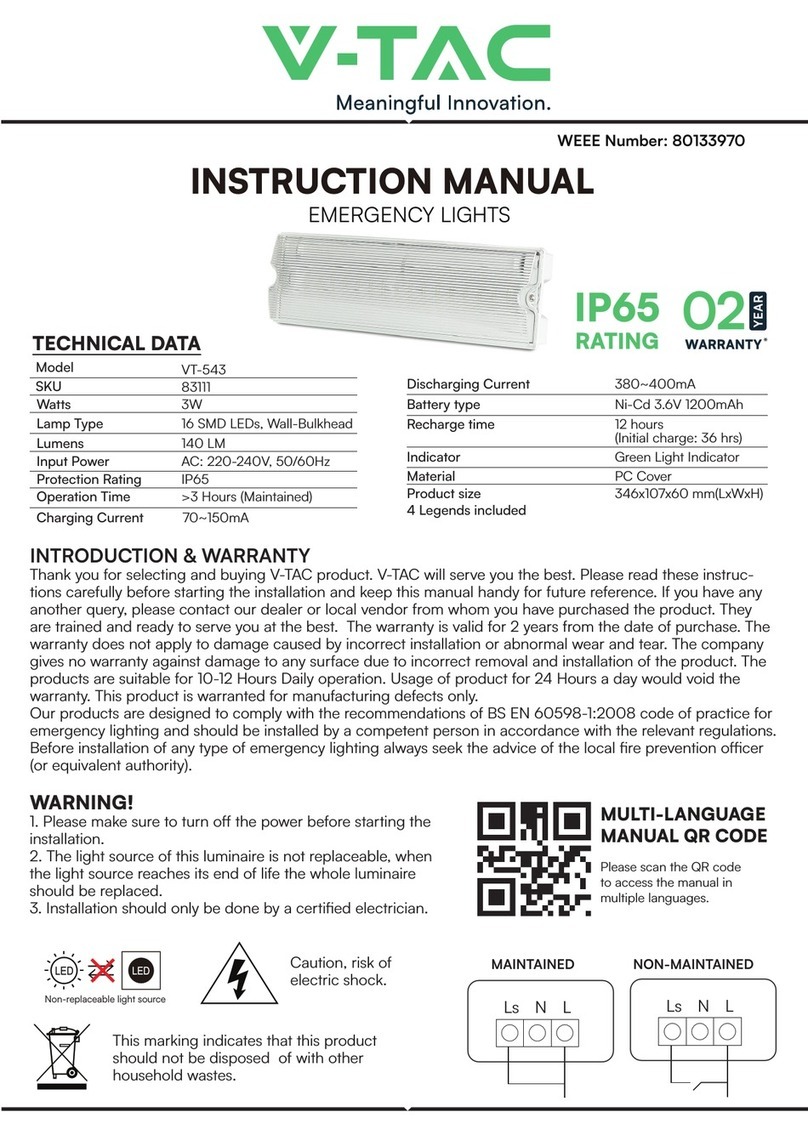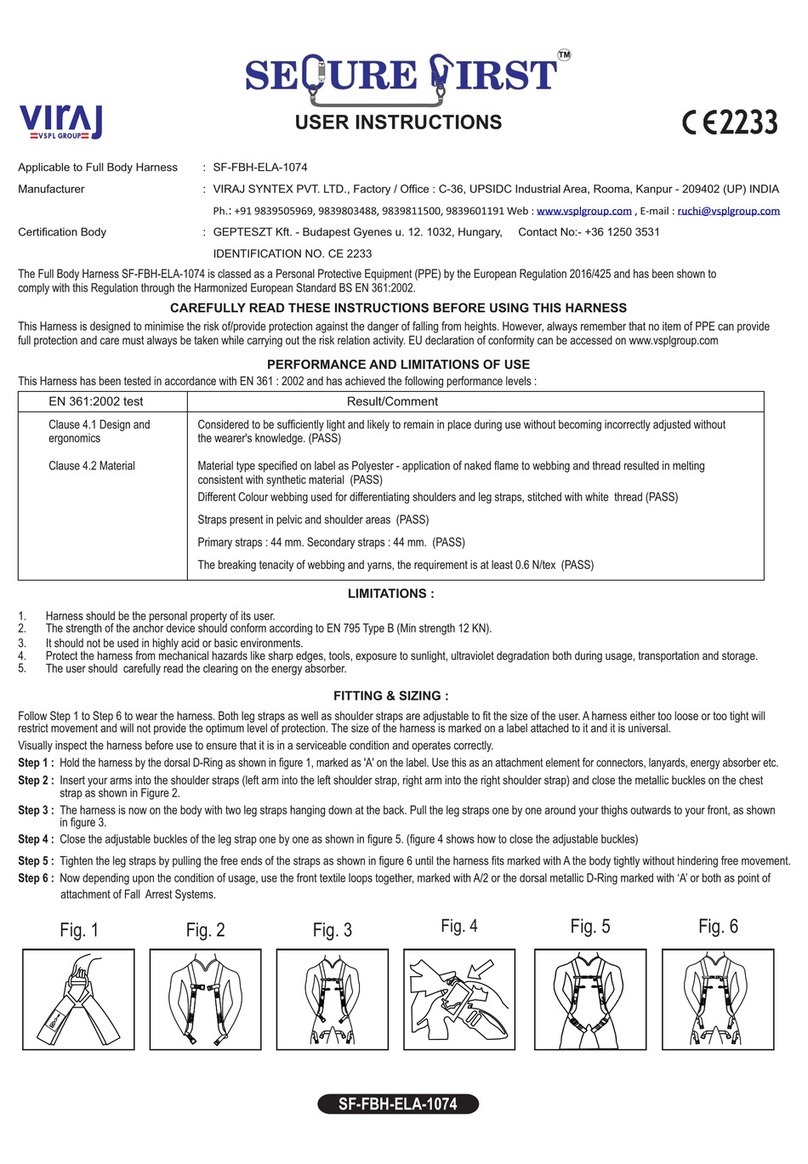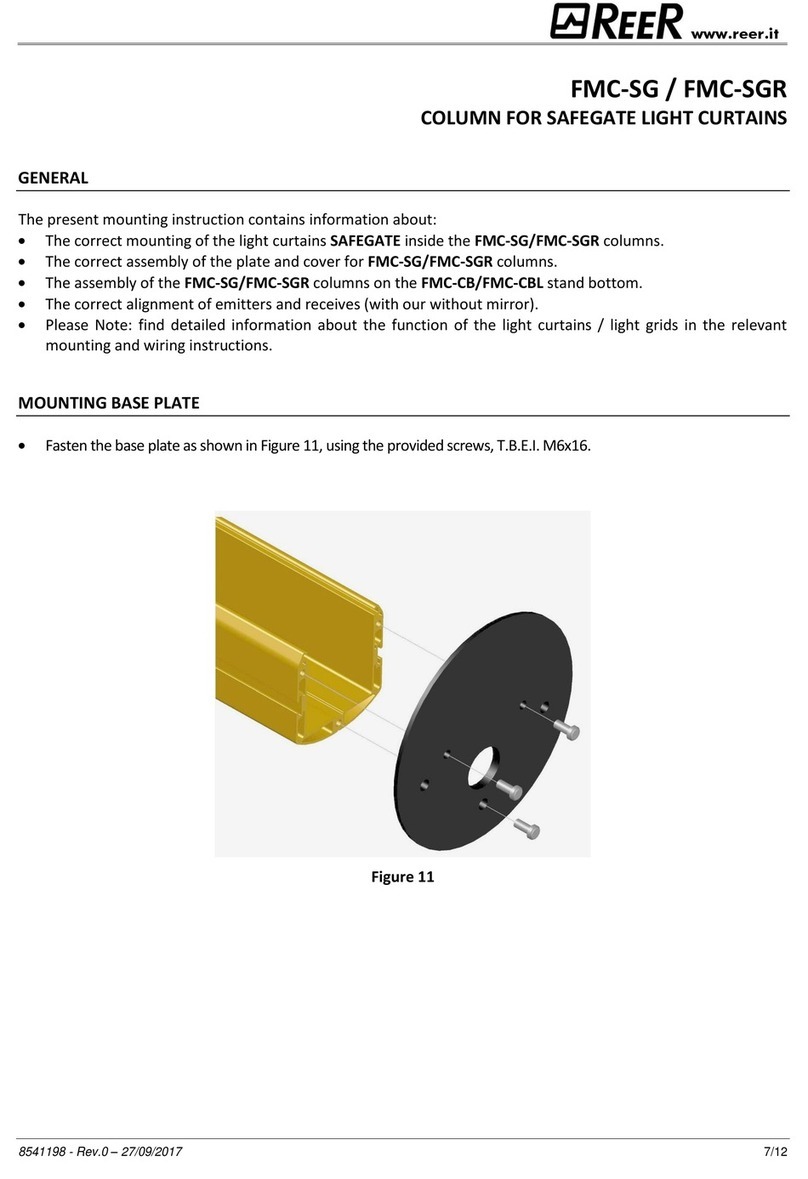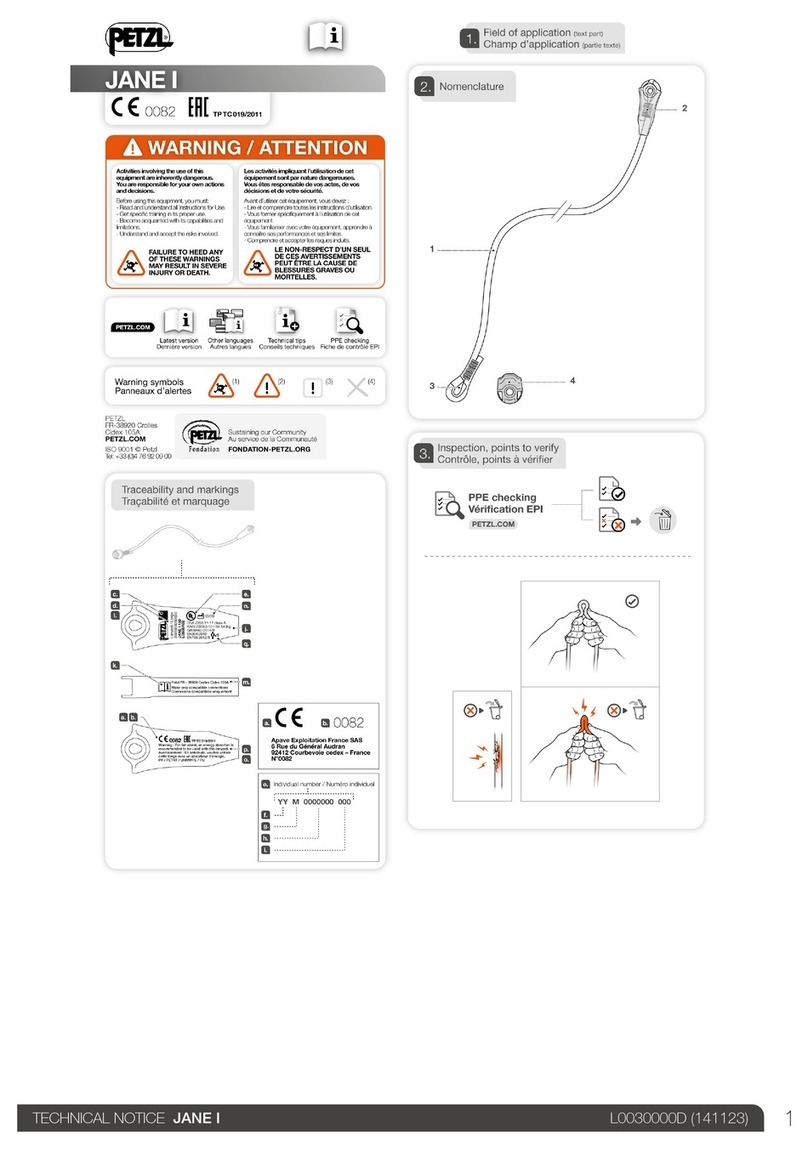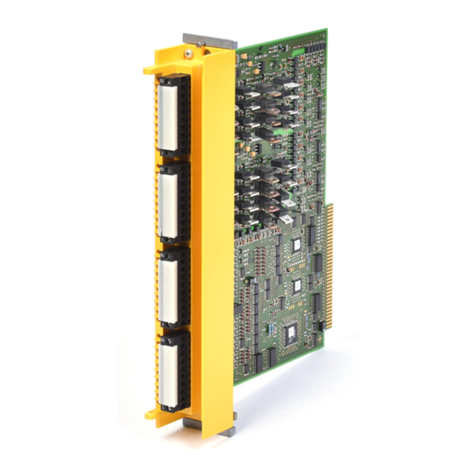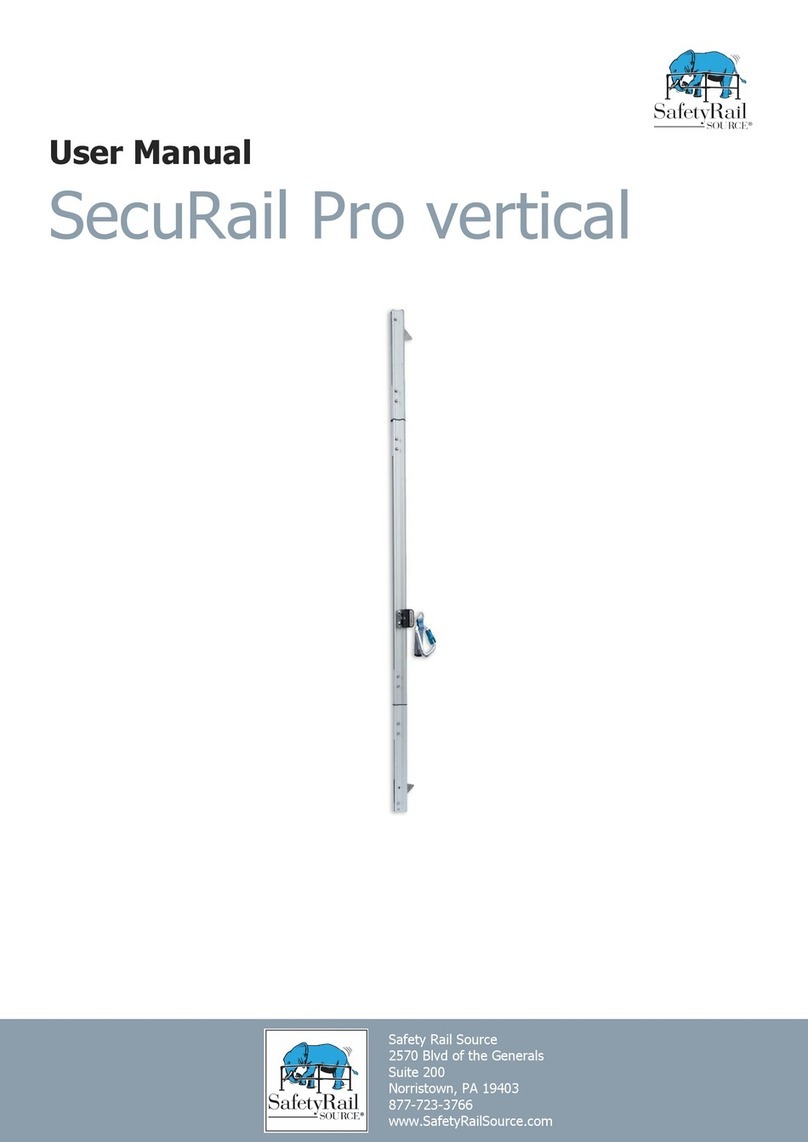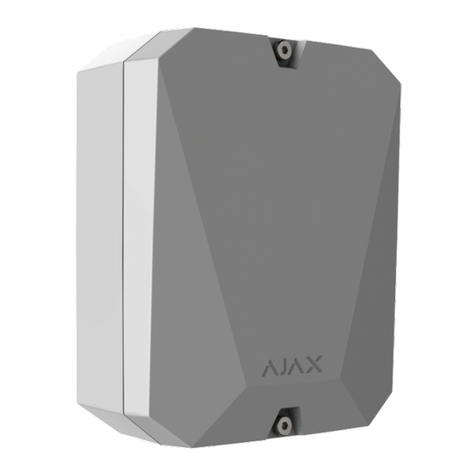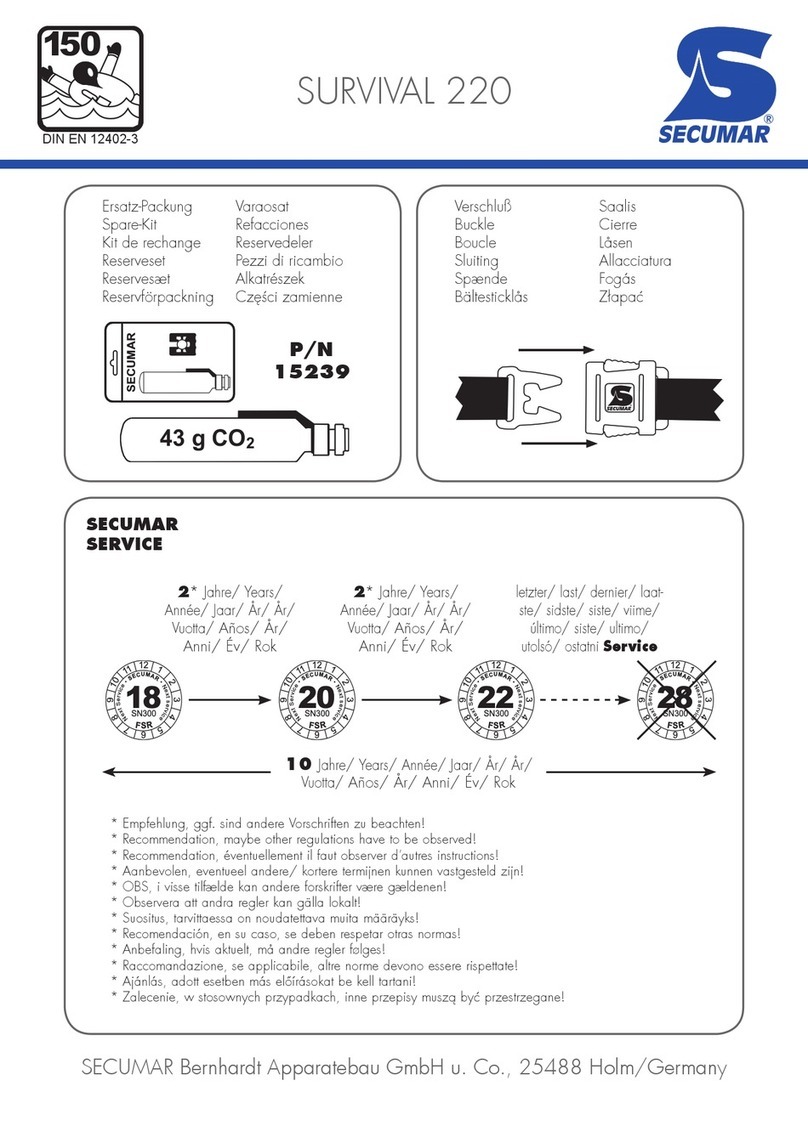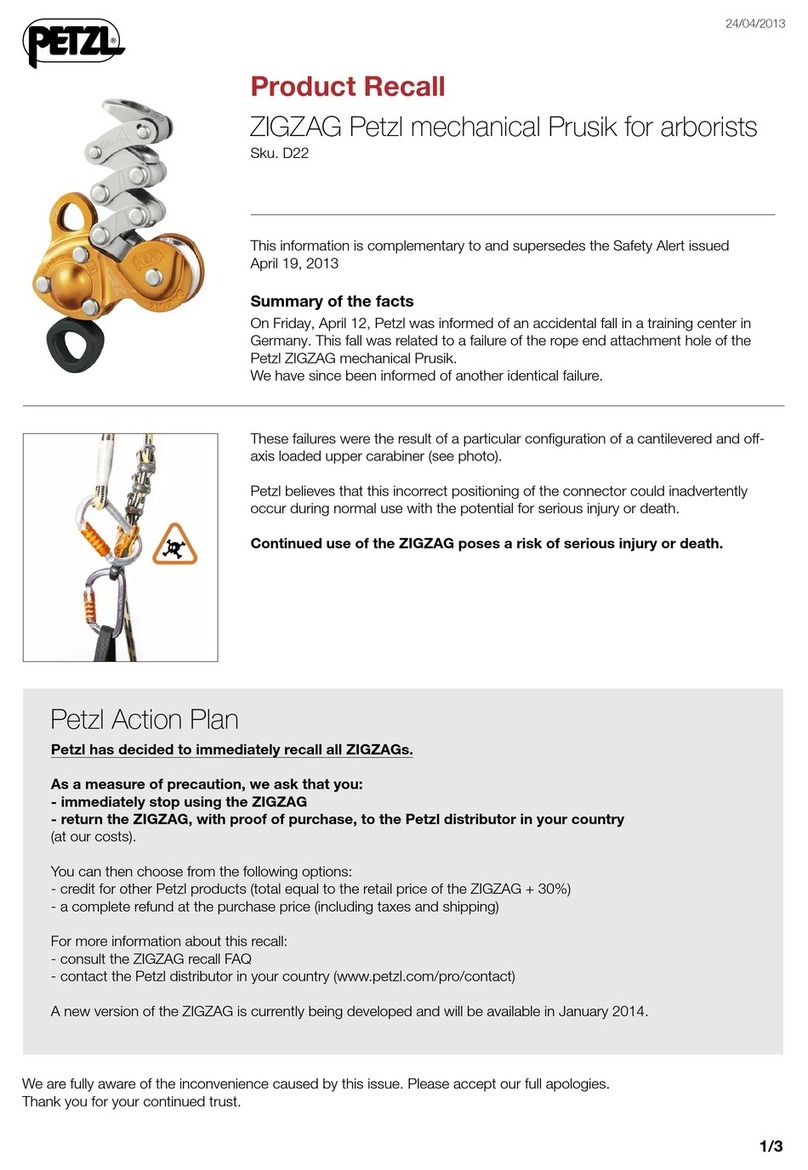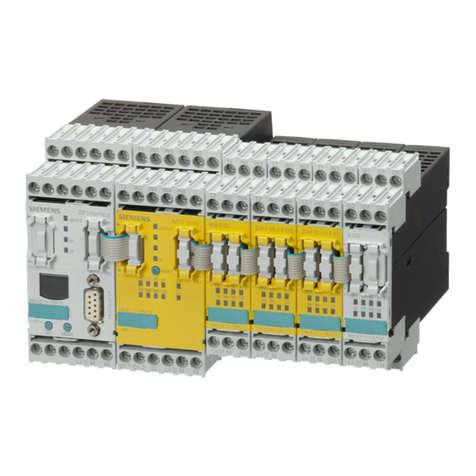ClimbTech BTA012N Guide

V3.0-A
OPERATION AND INSTRUCTION MANUAL
Beam Trolley Model: BTA012N
WARNING: ALL PERSONS USING THIS EQUIPMENT MUST
READ AND UNDERSTAND ALL INSTRUCTIONS. FAILURE TO DO
SO MAY RESULT IN SERIOUS INJURY OR DEATH. USERS SHOULD
BE FAMILIAR WITH PERTINENT REGULATIONS GOVERNING THIS
EQUIPMENT. ALL INDIVIDUALS WHO USE THIS PRODUCT MUST
BE PROPERLY INSTRUCTED ON HOW TO USE THE DEVICE. AVOID
CONTACT WITH PHYSICAL HAZARDS (THERMAL, CHEMICAL,
ELECTRICAL, ETC.). MAKE ONLY COMPATIBLE CONNECTIONS.

User Instructions must always be available to the user and are not to be removed except by the user of this equipment. For proper
use, see supervisor, User Instructions, or contact the manufacturer.
Compliant fall protection and emergency rescue systems help prevent serious injury during fall arrest. Users and purchasers of
this equipment must read and understand the User Instructions provided for correct use and care of this product. All users of this
equipment must understand the instructions, operation, limitations and consequences of improper use of this equipment and be
properly trained prior to use per OSHA 29 CFR 1910.66 and 1926.503 or applicable local standards.
Misuse or failure to follow warnings and instructions may result in serious personal injury or death.
PURPOSE
The BTA012N is an anchorage connector designed to function as an interface between the anchorage and a fall protection, work
positioning, rope access, or rescue system for the purpose of coupling the system to the anchorage. Any references to “anchorage
connector” in this manual include, and apply to, the BTA012N.
USE INSTRUCTIONS
1. A user must be of sound mind and body to properly and safely use this equipment in normal and emergency
situations. Users must have a physician ensure they are clear of any medical conditions that may aect the proper
and safe use of this equipment in normal and emergency situations.
2. Before using a personal fall arrest system, user must be trained in accordance with the requirements of OSHA 29
CFR 1910.66 in the safe use of the system and its components.
3. Use only with ANSI/OSHA compliant personal fall arrest or restraint systems. The anchorage must have the
strength capable of supporting a static load, applied in the directions permitted by the system, of at least 5,000-lbf
(22kN) in the absence of certication.
4. The user shall be equipped with a means of limiting the maximum dynamic forces exerted on the user during the
arrest of a fall to a maximum of 8 kN (1800-lbf). In the EU these forces must be limited to 6 kN (1350-lbf).
5. Use of this product must be approved by an engineer or other qualied person to be compatible with any and
all structural and operational characteristics of the selected installation location and system to be connected to
this anchorage connector.
6. The anchorage connector must be inspected prior to each use for wear, damage, and other deterioration. If
defective components are found the anchorage connector must be immediately removed from service in
accordance with the requirements of OSHA 29 CFR 1910.66 and 1926.502.
7. The anchorage connector should be positioned in such a way that minimizes the potential for falls and the
potential fall distance during use. The complete fall protection system must be planned (including all components,
calculating fall clearance, and swing fall) before using.
8. A rescue plan, and the means at hand to implement it, must be in place that provides the prompt rescue of users
in the event of a fall, or assures that users are able to rescue themselves.
9. After a fall occurs the anchorage connector must be removed from service and destroyed immediately.
USE LIMITATIONS: The anchorage connector shall not be used outside its limitations, or for any purpose other than that
for which it is intended.
1. The anchorage connector is designed for single user, with a capacity up to 310 lbs (140 kg) including
clothing, tools, etc.
2. The anchorage connector may only be loaded as shown in the LOADING CONDITIONS DIAGRAM.
3. The anchorage connector is designed to be used in temperatures ranging from -40ºF to +130ºF (-40°C to +54°C).
4. Do not expose the anchorage connector to chemicals or harsh solutions which may have a harmful eect.
5. Do not alter or modify this product in any way.
6. Caution must be taken when using any component of a fall protection, work positioning, rope access, or rescue
system near moving machinery, electrical hazards, sharp edges, or abrasive surfaces, as contact may cause
equipment failure, personal injury, or death.
7. Do not use/install equipment without proper training by a“competent person” as defined by OSHA 29
CFR 1926.32(f).
8. Do not remove the labeling from this product.
9. Additional requirements and limitations may apply depending on anchorage type and fastening option utilized
for installation. All placements must be approved by an engineer or other qualied person.
10. This anchorage connector should not be used as part of a horizontal lifeline system that has not been designed
and or approved to be used with 5,000-lbf (22kN) anchorage connectors.
11. The anchorage connector should only be used for personal fall protection and not for lifting equipment.
COMPATIBILITY LIMITATIONS
Anchorage connector must only be coupled to compatible connectors. OSHA 29 CFR 1926.502 prohibits snaphooks from being
engaged to certain objects unless two requirements are met: it must be a locking type snaphook, and it must be “designed for”
making such a connection. “Designed for” means that the manufacturer of the snaphook specifically designed the snaphook to be
used to connect to the equipment listed. The following connections must be avoided, because they can result in rollout* when a
nonlocking snaphook is used:
• Direct connection of a snaphook to horizontal lifeline.
• Two (or more) snaphooks connected to one D-ring.
• Two snaphooks connected to each other.
• A snaphook connected back on its integral lanyard.
• A snaphook connected to a webbing loop or webbing lanyard.
• Improper dimensions of the D-ring, rebar, or other connection point in relation to the snaphook dimensions that
would allow the snaphook keeper to be depressed by a turning motion of the snaphook.
*Rollout: A process by which a snaphook or carabiner unintentionally disengages from another connector or object
to which it is coupled. (ANSI Z359.0-2007)
Read This Instruction Manual Carefully Before Using This Equipment.

(Rollers)
(Adjustable Directions)
Max 10” or 255mm
Min 3” or 76mm
(Rollers)
(Notches) (Notches)
(Toggle Plate)
(Secondary Safety Lock)
Component Materials:
Aluminum: Cross Bar, Rollers
Polyester: Webbing
Zinc Plated Steel: Swivel
Stainless Steel: Spring, Hardware
Performance:
Minimum breaking strength:
5000-lbf (22kN)
Maximum capacity: One worker
with max weight of 310-lbs.
Weight: 7.7-lbs
Beam ange width range: 3”-10”
Beam ange thickness: 1/4“- 7/8”
Regulatory compliance:
OSHA 1910.66, OSHA 1926.502,
ANSI Z359.18 Type A,
ANSI Z359.7-2011,
EN 795:2012 CE1019
(Toggle Plate)
(Secondary Safety Lock)
(5,000-lbf Swivel)

ACCEPTABLE LOADING
30° MAX 30° MAX
LOADING CONDITIONS DIAGRAM
Installation:
1. Locate a structural steel beam ange capable of withstanding a 5,000-lbf (22kN).
static load or meeting OSHA 1926.502 requirements for a safety factor of two.
Mounting location must be approved by an engineer or qualied person.
2. Push up on the toggle plate to allow the adjustable rollers to move.
3. Keeping the unit perpendicular to the beam, t the rollers over the edges of the
beam ange.

4. Slide the adjustable rollers so that both sets of rollers are fully resting on the
beam ange.
5. Release the toggle plate and pull back on the adjustable rollers to ensure the
ratchet teeth are fully seated in the nearest ratchet notches.
6. Tug, rock, and twist the anchorage connector in all directions to ensure that it
can not come o of the ange.
7. Screw tight the secondary safety locking screws on the bottom of the toggle
plate to ensure the rollers can not move o the edge of the ange.
8. The rollers must ride on a clear, clean surface. Remove any dirt and grit if
necessary.
9. Ensure that Beam Trolley can not slide o end of beam it is attached to.
Install stoppers if necessary.
*Always re-adjust according to Installation steps 1-9 when moving to a new or
dierent sized beam.
*Remove any dirt and
grit if necessary.
*Weld or bolt in stoppers
if necessary to ensure that
Beam Trolley can not slide
o the end.

WORK SURFACE
WORK SURFACE
* DO NOT WORK *
ABOVE ANCHOR POINT
(ANCHOR POINT)
MINIMUM CLEARANCE 3ft (1m)
DECK/FLOOR/GROUND LEVEL
WARNING!!! SWING FALLS MAY OCCUR WHEN THE WORKER IS NOT DIRECTLY UNDER ANCHOR POINT.
*The user shall be equipped with a means of
limiting the maximum dynamic forces exerted on
the user during the arrest of a fall to a maximum
of 8kN (1800-lbf). In the EU these forces must be
limited to 6 kN (1350-lbf).

MAINTENANCE, CLEANING AND STORAGE
Cleaning periodically will prolong the life and proper functionalityof the product. The frequency
of cleaning should be determined by inspection and by severity of the environment. Clean with
compressed air and/or a sti brush using plain water or a mild soap and water solution. Do not use
any corrosive chemicals that could damage the product. Wipe all surfaces with a clean, dry cloth
and hang to dry, or use compressed air. When not in use, store anchorage connectors in a cool, dry,
clean environment, out of direct sunlight and free of corrosive or other degrading elements.
Inspection:
Ocial periodic inspection must be made at least annually. The inspection must be
performed by a qualied person other than the intended user. If severe weather or conditions
exist then inspections must be carried out more frequently. All inspection results must be
logged in the space provided above. (It is recommended that the anchor device is marked
with the date of the next or last inspection.)
1. Make sure all labeling is axed to the unit.
2. Inspect anchoring system for signs of damage or wear.
3. Inspect rollers ride ush with mounting surface and roll smothly.
4. Make sure the unit can adjust and lock properly on to beam ange.
5. Record inspection results in the space provide above.
*If any damage that could aect the strength or operation or unsafe conditions are
found, proper disposal is required. The anchorage connector must be rendered
unusable and then properly discarded.
DATE OF MANUFACTURE:
INSPECTION AND MAINTENANCE LOG
Part Number Comments Inspector Name
MODEL NUMBER:
Date

ClimbTech, LLC.
7303 Burleson Rd. Suite 901 Austin, TX 78744
1(512) 308-6440 / www.climbtech.com
Product Warranty, Limited Remedy and Limitation of Liability
WARRANTY: THE FOLLOWING IS MADE IN LIEU OF ALL WARRANTIES OR CONDITIONS, EXPRESS OR
IMPLIED, INCLUDING THE IMPLIED WARRANTIES OR CONDITIONS OF MERCHANTABILITY OR FITNESS
FOR A PARTICULAR PURPOSE. Equipment oered by ClimbTech is warranted against factory defects in
workmanship and materials for a period of one year from date of purchase or rst use by the original owner.
LIMITED REMEDY: Upon notice in writing, ClimbTech will repair or replace all defective items at ClimbTech’s
sole discretion. ClimbTech reserves the right to require that the defective item be returned to its plant
for inspection before determining the appropriate course of action. Warranty does not cover equipment
damage resulting from wear, abuse, damage in transit, failure to maintain the product or other damage
beyond the control of ClimbTech. ClimbTech shall be the sole judge of product condition and warranty
options. This warranty applies only to original purchaser and is the only warranty applicable to this product.
Please contact ClimbTech technical service department for assistance.
LIMITATION OF LIABILITY: IN NO EVENT WILL CLIMBTECH BE LIABLE FOR ANY INDIRECT, INCIDENTAL,
SPECIAL OR CONSEQUENTIAL DAMAGES INCLUDING, BUT NOT LIMITED TO LOSS OF PROFITS, IN ANY
WAY RELATED TO THE PRODUCTS REGARDLESS OF THE LEGAL THEORY ASSERTED.
Produced by: Nal Hon Industrial Co., Ltd
VVUU, a.s., Pikartská 1337/7
716 07 Ostrava-Radvanice
+420 596 252 111 / www.vvuu.cz
Table of contents
Other ClimbTech Safety Equipment manuals
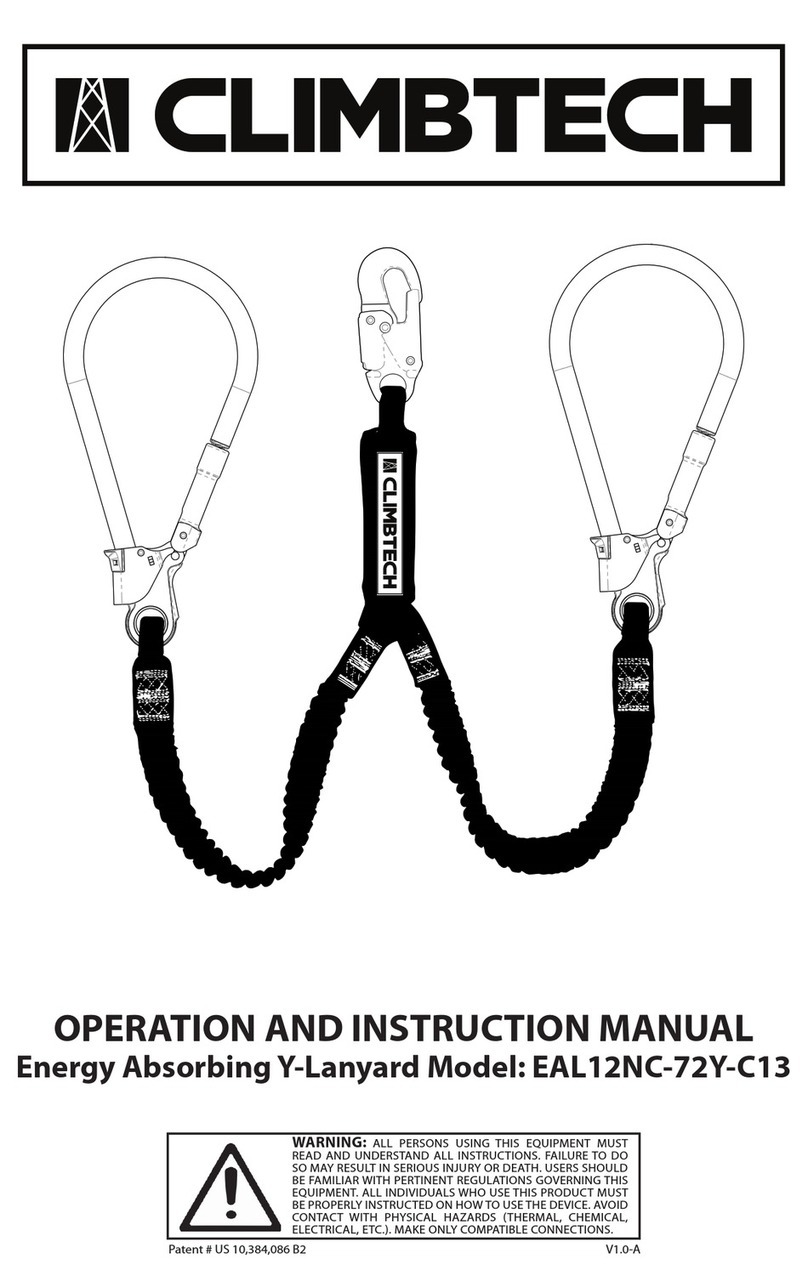
ClimbTech
ClimbTech EAL12NC-72Y-C13 Guide
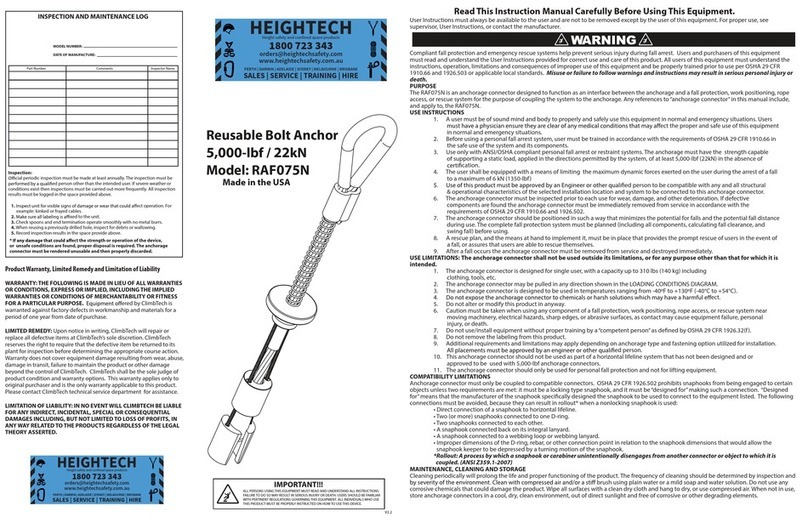
ClimbTech
ClimbTech RAF075N User manual
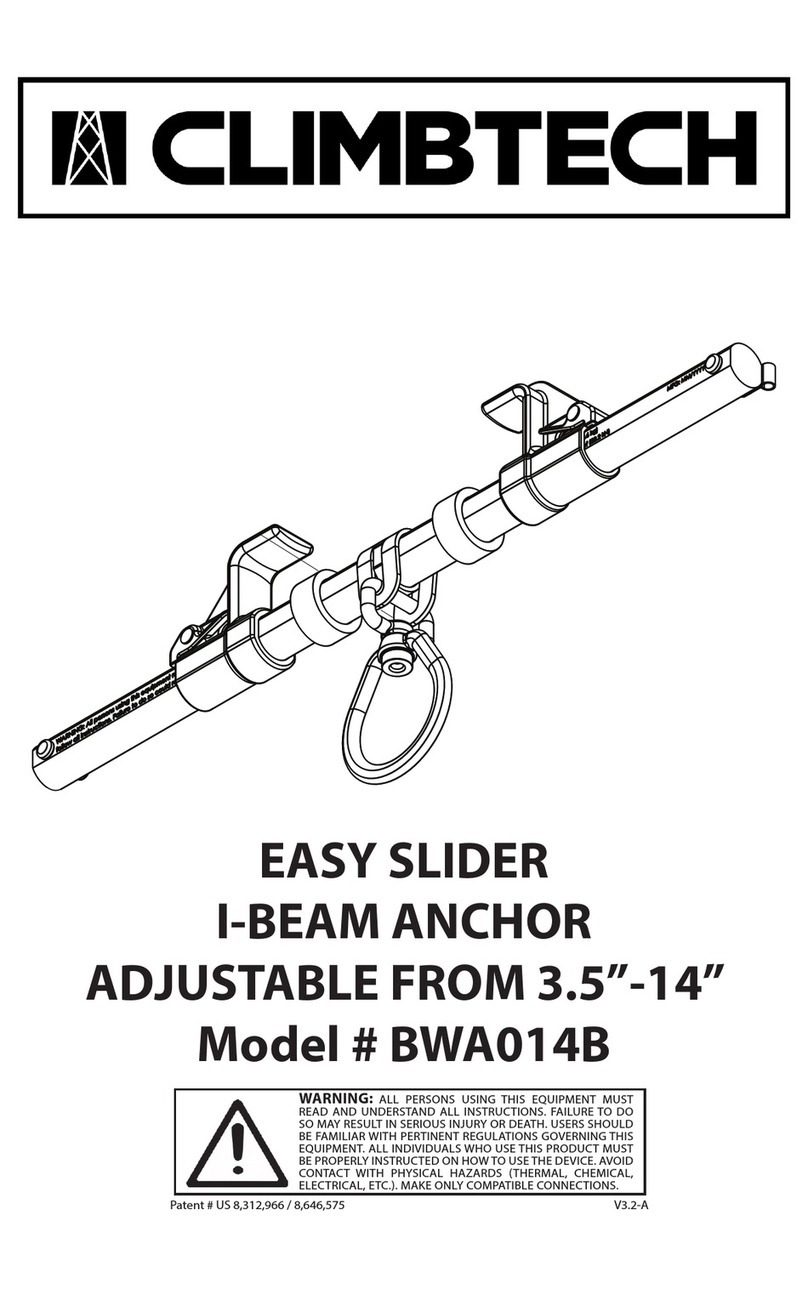
ClimbTech
ClimbTech BWA014B User manual
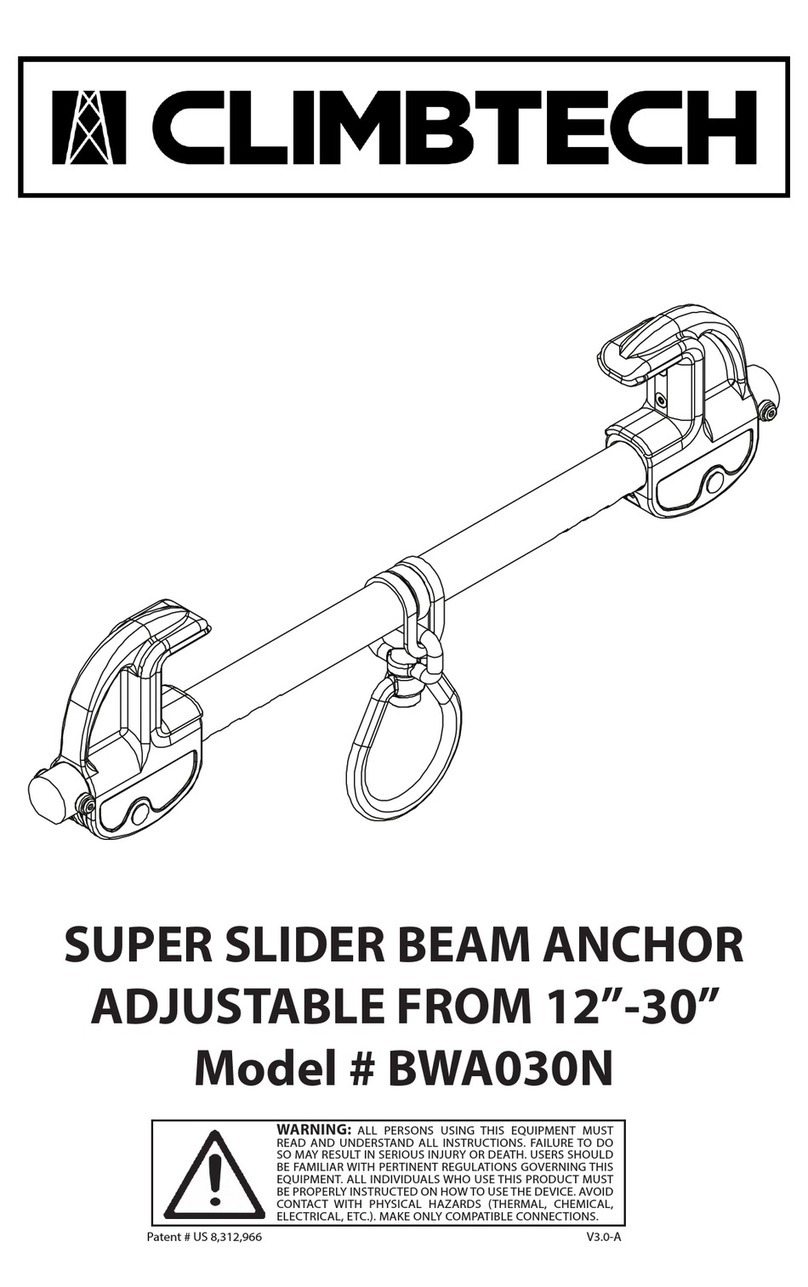
ClimbTech
ClimbTech BWA030N User manual
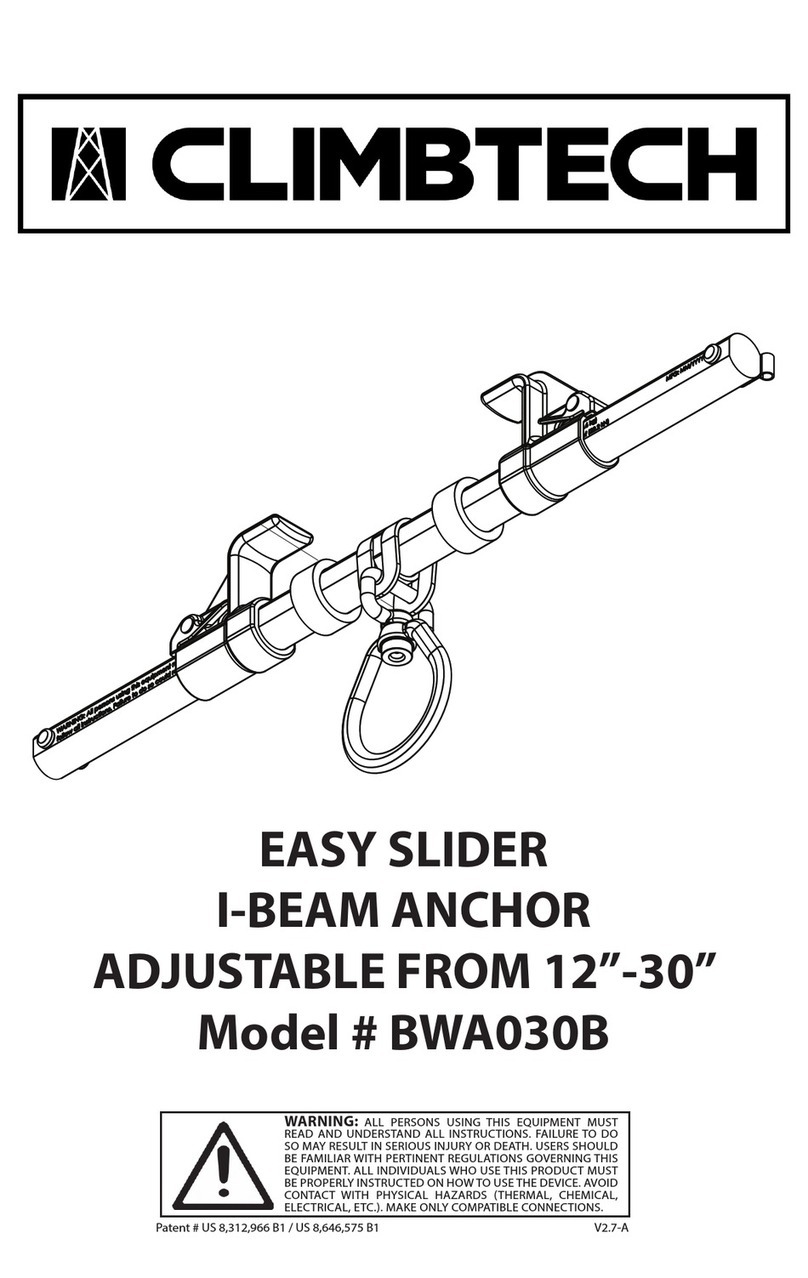
ClimbTech
ClimbTech BWA030B User manual
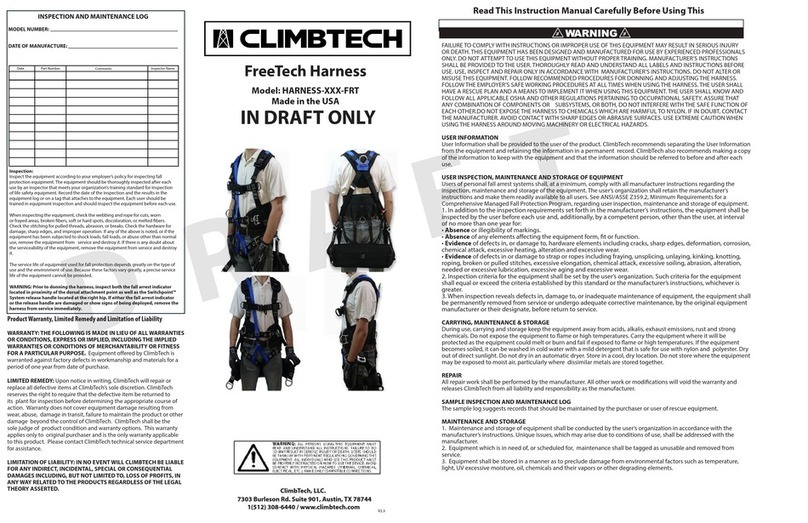
ClimbTech
ClimbTech Freetech HARNESS-XXX-FRT User manual
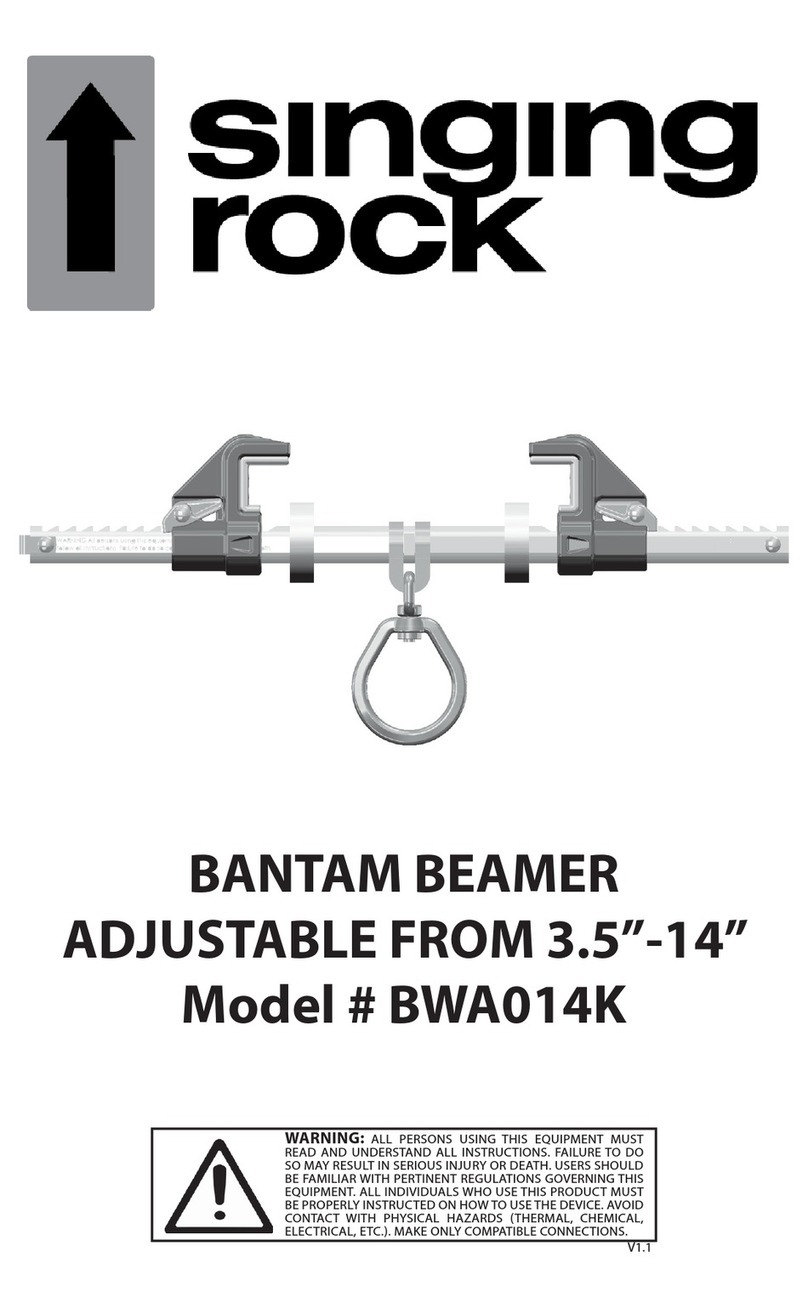
ClimbTech
ClimbTech BWA014K User manual
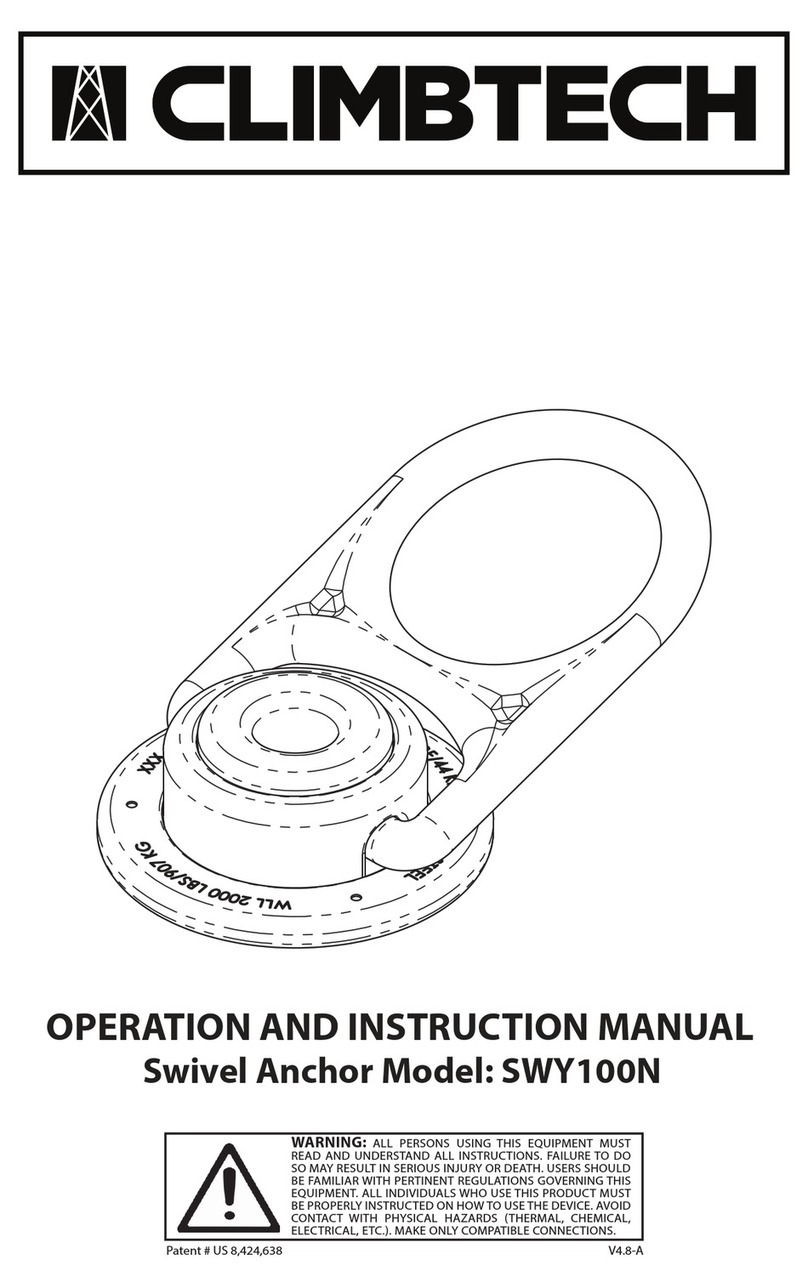
ClimbTech
ClimbTech SWY100N Guide

ClimbTech
ClimbTech RAF100N User manual
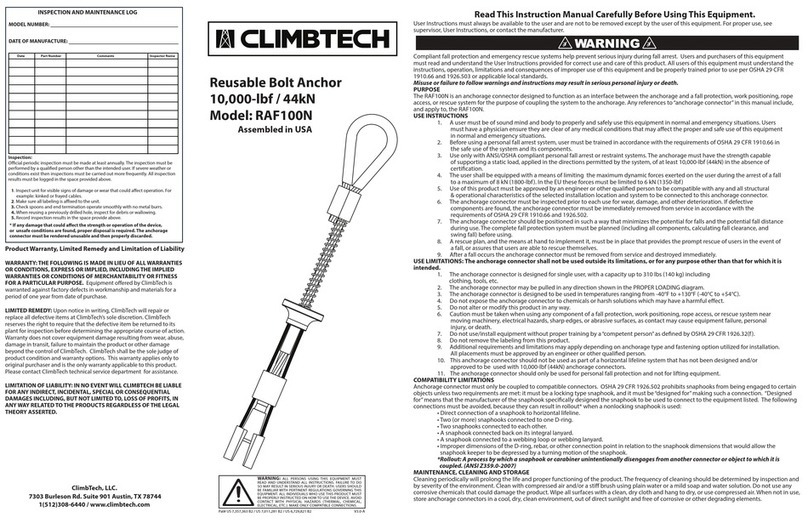
ClimbTech
ClimbTech RAF100N User manual
